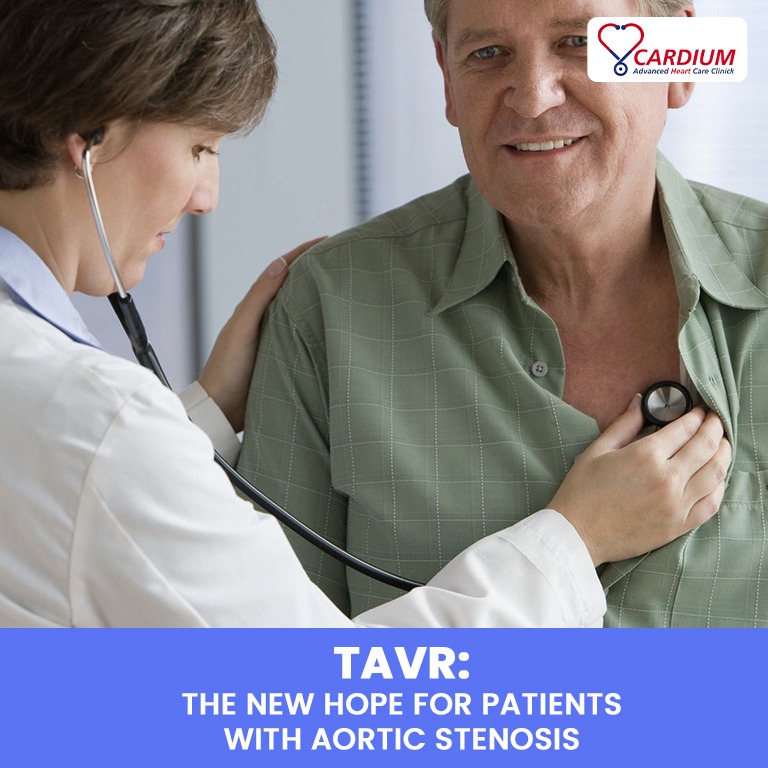
An excellent job is being done by TAVR specialists in India in offering this cutting-edge treatment method to folks with aortic stenosis. It speaks about the aortic valve being smaller or narrower. Although HPV is spreading quickly among individuals nowadays, we are not overly concerned about it. Here, we’ll discuss the issue of aortic stenosis and how to permanently protect yourself from it. You’ll also learn what TAVR actually is and how it offers people with aortic stenosis fresh hope. TAVR: The New Hope for Patients with Aortic Stenosis.
Aortic Stenosis – Causes and Symptoms
Aortic stenosis is a condition where the aortic valve narrows and obstructs blood flow from the heart into the aorta. The causes of aortic stenosis include:
- Congenital heart defects – some people are born with aortic valve abnormalities that lead to stenosis.
- Calcium buildup – as people age, calcium deposits can accumulate on the valve, causing it to narrow.
- Rheumatic fever – a complication of strep throat that can damage the heart valves and cause stenosis.
The symptoms of aortic stenosis can include: - Chest pain or discomfort
- Shortness of breath, especially during physical activity
- Fatigue
- Dizziness or fainting
- Heart palpitations or irregular heartbeat
- Swollen ankles and feet
- Rapid or pounding heartbeat
If you experience any of these symptoms, it’s important to see a doctor for evaluation and potential treatment options.
How can TAVR help patients?
TAVR (Transcatheter Aortic Valve Replacement) is a minimally invasive procedure that can help patients with aortic stenosis. During the TAVR procedure, a new valve is inserted through a catheter and guided to the heart, where it is placed inside the diseased aortic valve.
TAVR can help patients in several ways:
- Reduced risk of complications – TAVR is a minimally invasive procedure, which means there is less risk of complications such as infection, bleeding, and stroke compared to traditional open-heart surgery.
- Faster recovery time – TAVR patients typically have a shorter hospital stay and a faster recovery time compared to traditional surgery.
- Improved quality of life – TAVR can improve symptoms such as chest pain, shortness of breath, and fatigue, leading to an improved quality of life.
- Increased survival rates – studies have shown that TAVR can improve survival rates in patients with severe aortic stenosis who are considered high-risk for traditional surgery.
It’s important to note that TAVR may not be appropriate for everyone, and each patient’s case should be evaluated by a medical professional.
Some TAVR Surgery examples
- Edwards SAPIEN 3 TAVR system – This TAVR system is designed to replace a diseased aortic valve through a minimally invasive procedure. It uses a collapsible valve that is inserted through a catheter and guided to the heart.
- Medtronic CoreValve Evolut R System – This TAVR system is designed to replace a diseased aortic valve using a self-expanding valve. It is inserted through a catheter and guided to the heart, where it is placed inside the diseased valve.
- Boston Scientific LOTUS Edge Valve System – This TAVR system is designed to replace a diseased aortic valve using a valve that is repositionable and retrievable. It is inserted through a catheter and guided to the heart, where it is placed inside the diseased valve.
- Abbott Portico Valve System – This TAVR system is designed to replace a diseased aortic valve using a self-expanding valve. It is inserted through a catheter and guided to the heart, where it is placed inside the diseased valve.
Each TAVR system has its own unique features and benefits, and the choice of system will depend on the patient’s individual case and medical history. It’s important to discuss all available options with a medical professional.




